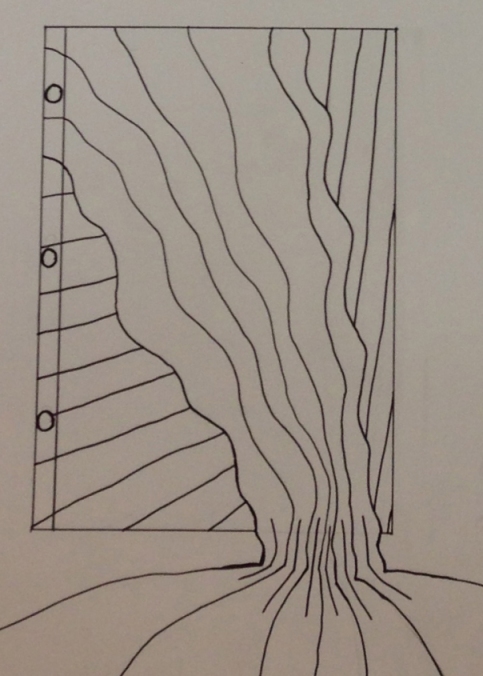Question: What is the shortest distance between two points?
.________________________________________.
Answer: A straight line.
We all know there is so much more to a line than a straight and narrow definition.
Some line definitions
- a long, narrow mark or band
- a continuous extent of length, straight or curved, without breadth or thickness
- a furrow or wrinkle in the skin of the face or hands
- a contour or outline considered as a feature of design or composition
- a curve connecting all points having a specified common property
- a geometrical object that is straight, infinitely long and infinitely thin
- a straight one-dimensional figure having no thickness and extending infinitely in both directions
- a line that “lies evenly with the points on itself”
A little bit of curve here and there but still, so straight and one-dimensional. Except for the furrows and wrinkles — now those are lines with lots of character. Where is the emotion and personality in all of those examples of lines?
Maybe you didn’t realize that lines can have personality or express emotion. That’s what we explored in this week’s design assignment.
Personality of Line: The conceptual notebook problem
The class brainstormed a long list of characteristics of grade-school children, e.g., shy, silly, bully, curious. We each had to pick four characteristics and using the basic visual elements of a standard notebook page, create four 5 x 5 notebook pages. Each page had to depict a different characteristic. For instance — anxious. What might an anxious notebook page look like? We had to use our imaginations.
Project guidelines
- OK to alter the space between the lines, increase or decrease the thickness of the lines, or change the direction of the lines.
- Use the lines of a notebook page in the design. Don’t use obvious symbols, e.g., hearts, smily faces, or peace signs.
- OK to stretch the bound of the page when appropriate.
- Only limitation is don’t completely destroy the basic identity of a notebook page.
We worked on some of the pages in class and the professor asked for ideas on music she could play that would correspond to some of the characteristics.
Playlist
We listened to Korn, Beethoven, Cold Play and Passion Pit. The music was really helpful when it conveyed the emotion I was trying to create and very distracting when it didn’t — Moonlight Sonata did not work well with fidgety.
Critique
Today we got to look at and critique each other’s creations. We could not just say, “Well, I like what I see, but I don’t know why.” As we learn about making art, we’re also learning how to talk about art. Our own and other’s. It’s hard.
Here are some examples of the work. See if you can match them up to one of the characteristics on the list. I’ll put the answers at the end of the post.
- confused
- anxious
- bully
- playful
- shy
- daydreamer
- fidgety
How did you do?
The answers, from top to bottom, are
- daydreamer
- anxious
- fidgety
- shy
- bully
- confused
- playful
(Thanks to Angela and Amelia for letting me use some of their drawings along with a few of my own.)
Next week I think I’ll talk about drawing shapes. That’s what we’re working on in drawing class. Not simply “this is a square, that’s a circle,” but shapes within shapes. We have to find six things and draw the shapes within them.
Take a close look at this crumpled paper bag.
See all those subtle little shapes made by the wrinkles? That’s what I’m talking about. I still have to find five more things. Wish me luck!
[GARD align=”center”]











4 Comments
Kenneth Capron · September 27, 2013 at 11:17 pm
Now Diane – we all know that the shortest distance between any two points is actually an electro-magentically induced temporal-spatial quantum-string warp – thus making it the shortest AND quickest distance/time between any two points.
But your class does sound interesting.
I once had to write an essay about a day in the life of an inanimate object – I chose a lamppost and developed a severe fear of birds flying nearby. ha ha ha
Diane Atwood · September 27, 2013 at 11:45 pm
Ken, you MUSTsee this — string theory explained to the tune of Bohemian Rhapsody. I think you will love it!
http://www.npr.org/blogs/krulwich/2013/09/18/223716891/mama-mia-mama-mia-a-canadian-bohemian-rhapsodizes-about-string-theory
Teresa · January 16, 2014 at 1:34 pm
Diane
Great job with both art work And blog!
Thanks for The passion, The art And The inspiration!!!
dianeatwood · January 16, 2014 at 2:18 pm
Thanks Teresa! The next semester starts tomorrow — Drawing II — can’t wait! I’ll see you soon.